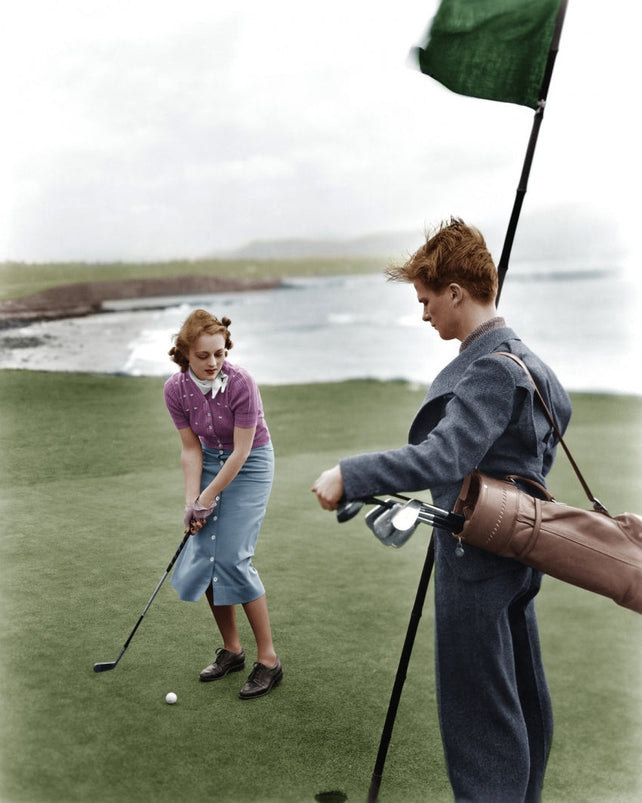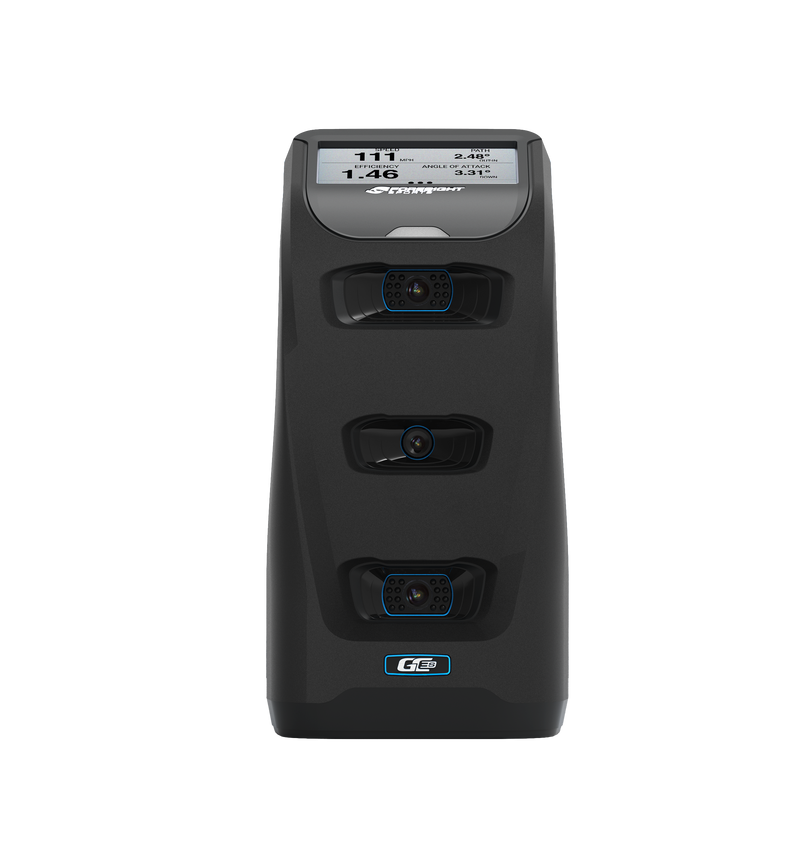13 Responsibilities That Make Caddies Indispensable in Golf
Jul 30, 2020
The golf caddy is an important job. The caddy is there to help provide assistance to the golfer and serve their needs. They have many different types of responsibilities that go beyond carrying the golfer’s clubs and keeping score.
Where Did the Term Caddy Come From?
There is some debate about the history of golf caddies and how the term came about. One particular story that many golfers tell is that Mary, Queen of Scots was the one that coined the term. Queen Mary spent much of her early adult years in France, where the French military cadets would carry the golf clubs for the Queen.
It is believed that when Queen Mary returned to Scotland, she brought the custom of using cadets and they became to be known as caddies.1 That story is one that many people enjoy since Queen Mary was the first known woman to golf.
What Types of Responsibilities Does a Caddy Have?
We already mentioned caddies have to carry the golf clubs and golf equipment, for the golfer and help keep score. With scoring they need to know what the different strokes are called – Par, Birdie, Eagle, Double Eagle (Albatross) – and know how many points to record.
Other key responsibilities caddies are expected to carry out include:
1. Hand clubs to the golfer.
The caddy is responsible for handing the right golf club to the golfer when they are making a shot. The caddy needs to know the difference between irons, wedges, putters, woods, and hybrids. They must also know the different numbering configurations used with certain clubs, like the difference between a 9-iron and a 9-hybrid.
2. Keep the golf clubs and equipment clean.
The caddy is expected to keep the golf clubs, balls, and other equipment clean throughout the game. They should carry different types of towels with them and appropriate cleaning products. It is not uncommon for caddies to ensure the ball is cleaned prior to each tee off and before each putting attempt once the ball is on the green.
3. Have sufficient knowledge of golf.
Caddies need to know all golfing terminology and the rules of the game. They also need to know all of the golf equipment and clubs necessary. It does not matter whether they are caddying at a local country club or for a pro golfer at a PGA tournament. Caddies must also be prepared to provide advice to golfers when asked, like which club would be best for a particular shot.
4. Know the golf course well.
Before caddying, it is always a good idea to learn more about the golf course. Caddies need to know the “lay of the land” and where potential traps and bodies of water are located. They also need to know where the out-of-bound markers are located.
5. Know distances to the greens.
Golfers will frequently ask their caddies how far it is to the green. A caddy should be able to use the various distance markers on the golf course and know how to calculate the distance from the ball to the green. Alternatively, some caddies have gone high-tech and now carry range finders with them, which automatically calculates the distance by simply looking through the lens on the device.

6. Rake sand traps and bunkers.
Caddies have to clean up sand traps and bunkers after their golfer gets their ball out. They must leave the area as it was when they arrived by raking the entire area the golfer disturbed. This way, when the next golfer gets their ball stuck in a trap or bunker, the conditions will be exactly the same as the previous golfer.
7. Fix and replace any ball marks and divots the golfer makes.
Ball marks are any type of depression in the putting green that is made when the ball lands on it. Divots are made when the golfer doesn’t slice the swing correctly and takes a chunk of grass out of the course. Caddies are responsible for fixing ball marks, so the putting green remains smooth. With divots, they simply retrieve the chunk of grass, place it back down and step on it to push it back into place.
8. Watch the ball when it is hit.
Caddies should track where the ball is going after the golfer hits it. They need to be able to know the exact direction where the ball went and landed. Caddies will use various markers and landmarks to help track the location of the ball, even when they cannot see it, like if it went into a sand trap.
9. Be able to provide advice on which club to use.
Golfers may ask their caddies advice on which club they think is best used to make a specific type of shot. The caddy should be able to respond and provide advice on different club options. Yet, if the caddy is not sure, it is always best to tell the golfer they are not sure.
10. Become familiar with the golfer’s style of golfing.
Caddies that caddy for the same golfers should start to develop a sense of how the golfer golfs. This knowledge can be useful when handing clubs to the golfer and offering advice on which clubs to use for various shots. For instance, if the golfer seems a bit heavy-handed when striking the ball, they may only need an 8-iron and not a 6-iron to make a longer shot.
11. Know how to tend to the pin.
The pin is the pole and flag that sticks into the hole on the golf green. Once the golfer has gotten his ball onto the green, the caddy is responsible for removing the pin from the hole before the golfer putts. After the golfer hits the ball into the hole, the caddy should remove the ball and replace the pin into the hole.

12. Count the clubs and count again.
The last thing a caddy wants is for their golfer to call for a club and it is not in the bag. This has happened during PGA tours and it can be quite the embarrassment for the caddy. Take the time to count the clubs and verify each one is present and accounted for. Then, count them a second time just to be safe.
13. Help the golfer on the course using a ForeCaddy.
When a caddy is not on the golf course, caddying yourself can become cumbersome. That’s where having a cutting-edge smart club cart can be more than beneficial. The ForeCaddy turns your golf outing into a walk in the park. The ForeCaddy has four different modes- Manual, Power Assist, Remote Control, and the beta mode, Follow. The ForeCaddy allows you to walk your club cart with the Power Assist mode up hills or difficult areas on the course. The Remote Control allows you to leave your cart and walk away, then use the Follow mode to have your cart come to you. This technology allows you to have a lot more freedom and convenience on the course. Best of all, if you do have a caddy helping you, it will allow your caddy to pay more attention to your game and become more in tune with your needs.
What Other Things Are Necessary to Be a Caddy?
A caddy needs to be able to dress appropriately when caddying. This means a golf shirt, dress slacks, and so on. For instance, caddies who work at country clubs often have a set “uniform” they are required to wear. On the other hand, caddies that caddy at the PGA will want to be dressed professionally, just like the professional golfer they are caddying for.
Caddies should always also know where to stand. They need to stand out of the way and remain silent as the golfer gets ready to take their shot. Caddies should be aware of their shadows too. The last thing they want is for their shadow to block the putt line.
Most importantly, caddies need to remain professional at all times. They should be able to help motivate golfers when they are having a bad game. They will often encourage them by reminding golfers that the only shot that truly matters is the next shot.
As evident, being a caddy is much more than carrying around a bag of golf clubs and handing clubs to the golfer. Yet, caddying can be a fun, exciting, and rewarding career for those that love the game of golf and may not be good enough at it to go pro.
For further information about the ForeCaddy, please feel free to browse online at Foresight Sports or contact us at (858) 880-0179 to speak with a representative today.
Source:










































